A Trail of Memories from Circular Walks in Yorkshire and Cumbria
Circular walks in Yorkshire and Cumbria are the heart and soul of my website. I maintain a diary to chart the development of my site and document my adventures across some of Northern England’s most breathtaking landscapes.
As an enthusiast of the great outdoors, my passion drives me to explore and capture the beauty nestled within the Yorkshire Dales, North York Moors, Lake District, Howardian Hills, North Pennines, and their surrounding areas. This page serves as a compilation of journal entries, each detailing the interesting sights and memorable experiences I encounter on my walks.
With each update to my journal, I extend my experiences to social media platforms such as Facebook, Instagram, X (Twitter), Tumblr, and Pinterest, sharing snapshots and moments from my journeys. I would be honoured if you joined me on this exploration, not just as a reader, but as a fellow explorer, by following my updates on any of these networks.
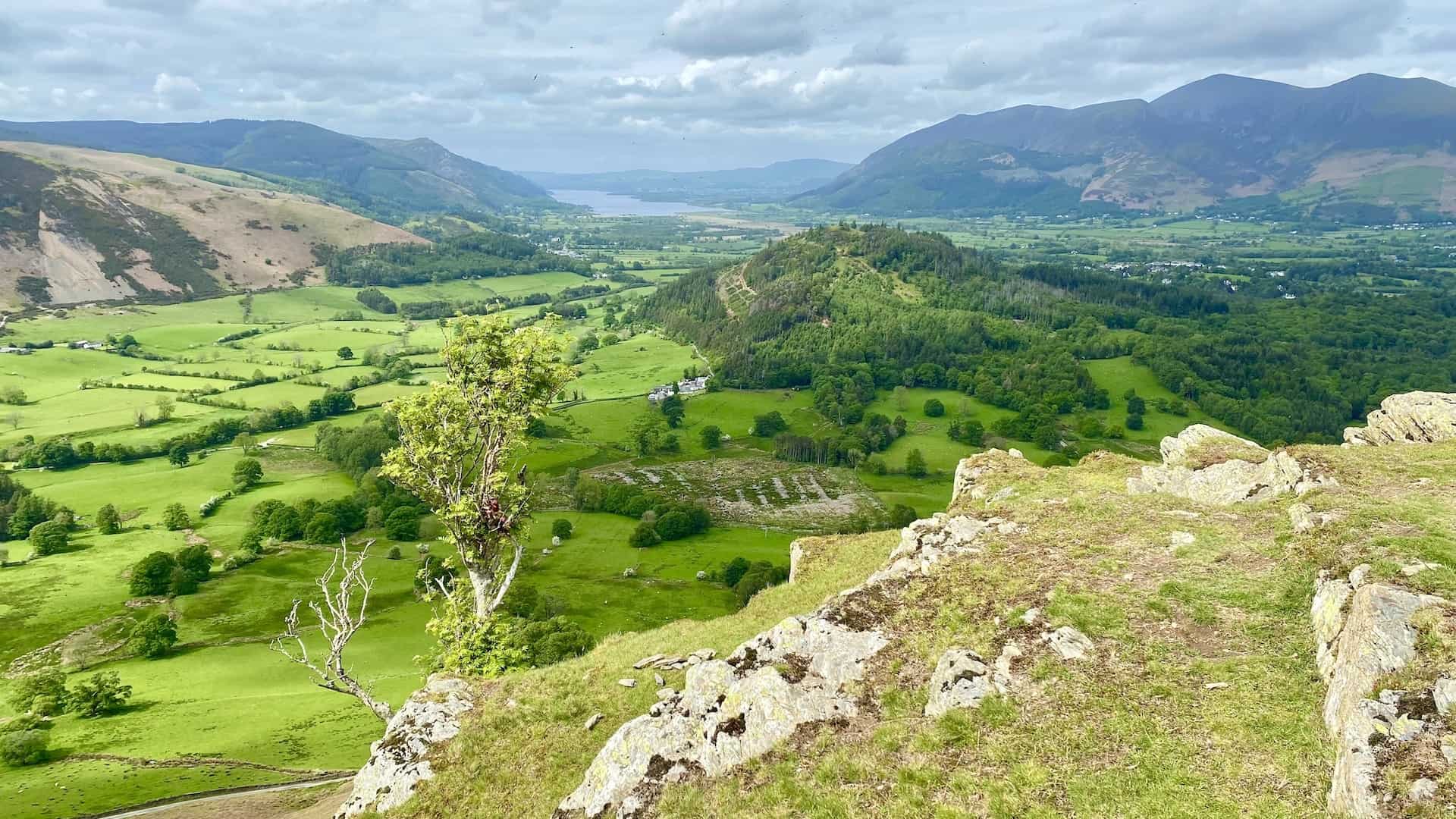
A Guide to Understanding Wind Speeds on the Mountains
During a recent walk along the Pennine Way, my friends and I discussed the impact of wind speeds while crossing the Yorkshire Dales and Lake District mountains. To better understand this, I’ve conducted some research and compiled a straightforward guide on how different wind speeds can affect our walks.
Less Than 20 Miles per Hour
At this wind speed, the effect on walking is negligible and will not cause you any problems.
20-30 Miles per Hour
These winds are unlikely to affect your balance and may only be a slight inconvenience.
30-40 Miles per Hour
At this range, winds start to affect the balance of a strong adult.
40-50 Miles per Hour
Walking becomes arduous. You will need to lean into the wind, and your energy output will significantly increase. There is a risk of being blown off balance.
50-60 Miles per Hour
Walking becomes challenging and exhausting. Move between gusts and brace yourself when a gust arrives. Leave the mountain by the easiest and safest route, staying well away from exposed edges.
60-70 Miles per Hour
Attempting to walk in these wind speeds is dangerous, with a high risk of being blown over and suffering injuries. Avoid difficult underfoot conditions or exposed edges and leave the mountain as soon as possible.
70+ Miles per Hour
Extreme danger is present at these wind speeds. If you are caught out in winds of 70 mph or more, proceed with the wind on your back, avoid exposed edges, and link arms. You may even need to crawl to cross particularly exposed sections.

Discover the Enhanced Mellbreak Walk in the Heart of the Lake District
Ready for an adventure that will take your breath away? I’ve just revamped my Mellbreak walk guide. Imagine an 8-mile journey through the heart of the Lake District, where every turn reveals another stunning vista. From the challenging ascent towards Mellbreak’s North Top to the serene stroll along Crummock Water’s western shore, this walk is a treasure trove of natural beauty.
Whether you’re a seasoned hiker or looking for a memorable day out, my guide has everything you need to make the most of this spectacular route. I’ve included all the insider tips, so you can enjoy the cascading Scale Force waterfall, the tranquil shores of Crummock Water, and the breathtaking views from Mellbreak’s ridge, hassle-free.
Don’t miss out on this Lake District gem. Click the link below to access the enhanced Mellbreak walk guide. Let nature’s majesty inspire you to lace up your boots and hit the trail.
https://www.paulbeal.com/mellbreak-walk
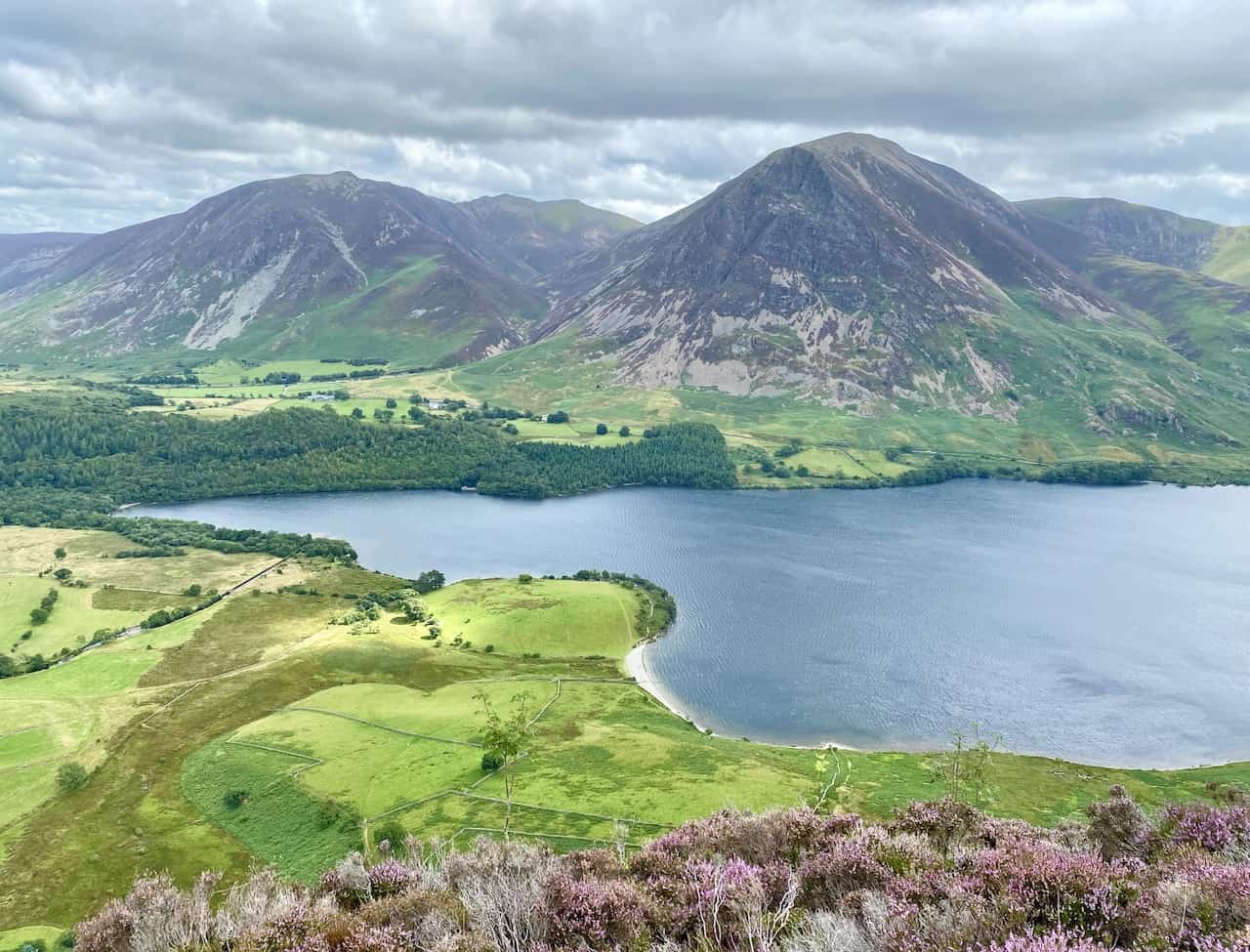
Explore the North York Moors with These Easy Farndale Walks
The daffodil season is coming to an end now, but you can enjoy the Farndale daffodils walk in the North York Moors at any time of the year. On my website, you’ll find two guides that might pique your interest.
The first guide details a linear route, there and back, just a tad under four miles, perfect for the entire family. It’s accessible for pushchairs and wheelchairs, starting from Low Mill. A nicely surfaced track leads you alongside the River Dove through the Farndale valley to Church Houses. For the return journey, you’ll retrace your steps back to Low Mill. Discover more at:
https://www.paulbeal.com/farndale-daffodils
The second guide offers a circular route, also just slightly less than four miles. This adventure begins in Church Houses, with the first half taking you across farmland to Low Mill. It involves a bit more ascent, nothing too strenuous but rewarding you with splendid views. The latter half of the walk brings you back along the track by the River Dove in the Farndale valley. For further details, visit:
https://www.paulbeal.com/farndale-daffodils-walk
Both walks are leisurely, enjoyable, and well-documented on my website, where I’ve included all the essential details such as parking, maps, tools, and a selection of my photos to give you a taste of what to expect. Remember, the beauty of Farndale isn’t just for spring; these walks are delightful all year round.
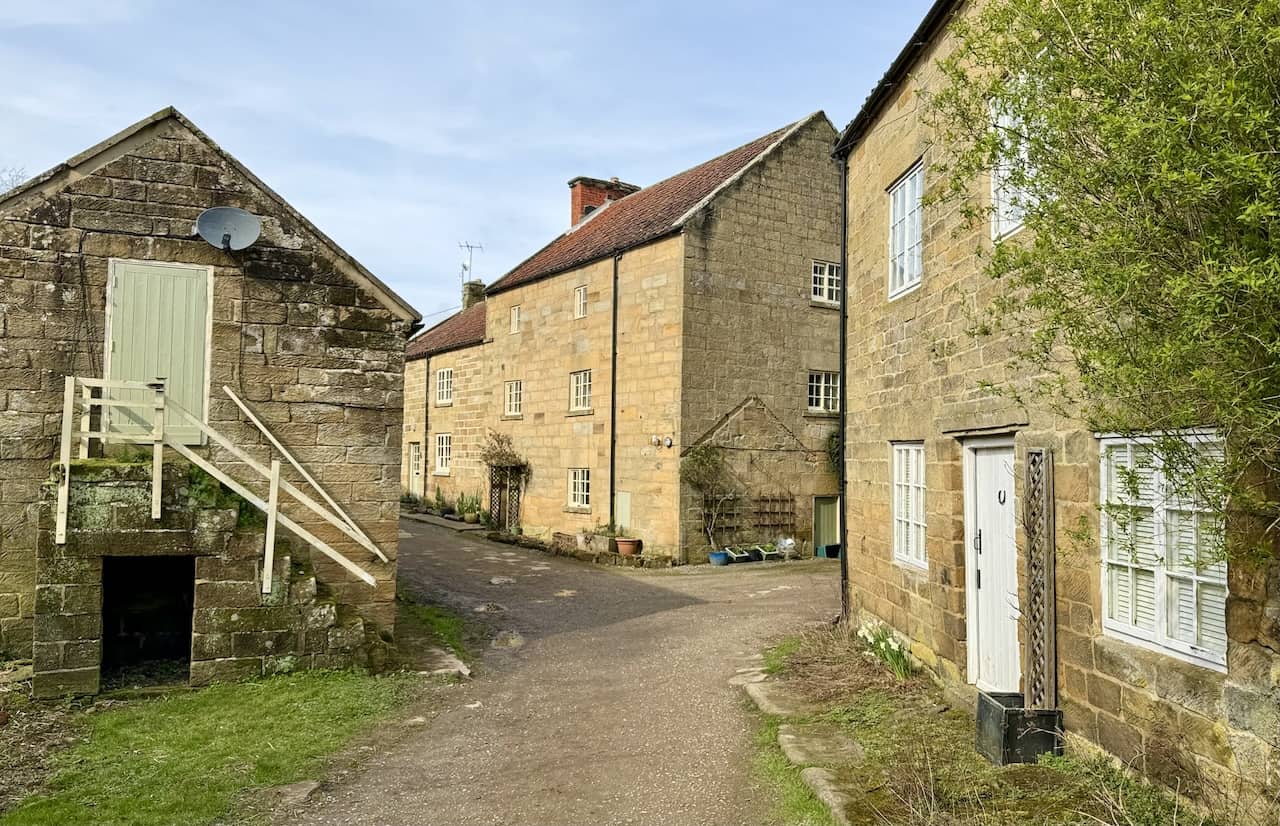
The Helvellyn Summit Adventure From the West
A few months ago, I shared a guide on my website titled ‘Helvellyn Walk from Thirlmere: A Guide to a Less Crowded Ascent’. You can read about the walk here:
https://www.paulbeal.com/helvellyn-walk-from-thirlmere
This 7-mile journey begins at Swirls Car Park and leads to the Helvellyn summit from the west. The guide’s popularity has encouraged me to detail another Helvellyn trek, starting again from the Thirlmere Reservoir side. However, this path stretches over 11 miles, presenting a slightly more demanding challenge.
The adventure kicks off in Legburthwaite, nestled in St Johns-in-the-Vale, where a conveniently located car park awaits near the B5322. After tackling the initial steep ascent to Sticks Pass, you’re rewarded with a magnificent ridge walk. This route covers Raise, White Side, Helvellyn’s Lower Man, and, finally, Helvellyn itself. It concludes with one of the Lake District’s finest descents, meandering above Comb Crags, which boast breathtaking views of Thirlmere. Check out the walk here:
https://www.paulbeal.com/helvellyn-circular-walk
I’ve enriched the guide with numerous details, including a concise route description, maps, statistics, and a selection of my photographs. I highly recommend this walk for those in search of an energetic outing.
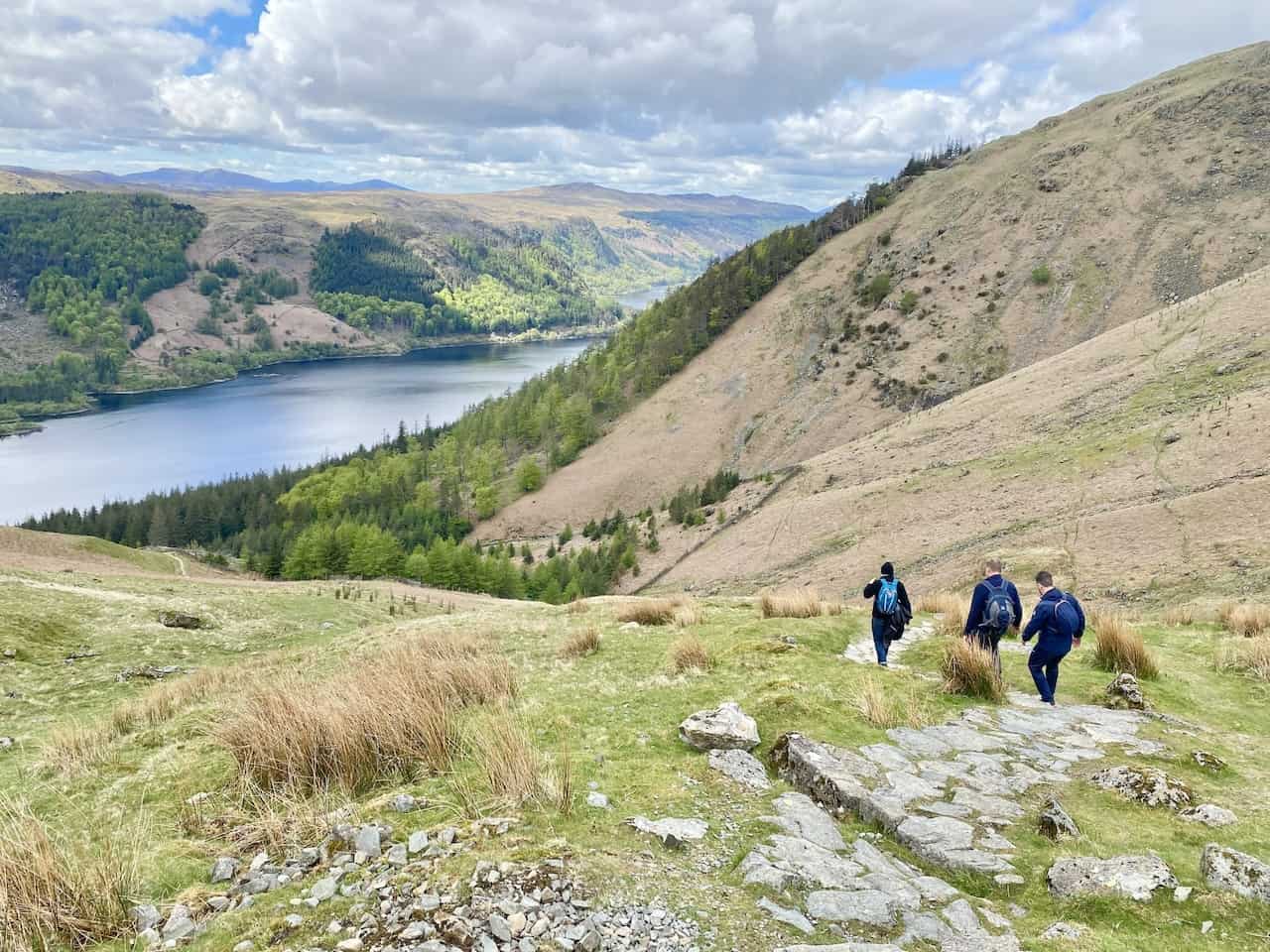
Explore the Wainstones Circular Walk in the North York Moors
Prepare yourself for some of the most spectacular views the North York Moors has to offer, as you ascend the heights of Cold Moor on your way to the magnificent rock formations known as the Wainstones. This 8-mile circular route commences at Chop Gate, incorporating exhilarating segments of the Cleveland Way National Trail and skirting Urra Moor, the North York Moors’ highest point, on your return journey.
The route unfolds breathtaking panoramas across Teesside and the Bilsdale valley, complemented by the intriguing spectacle of the Wainstones. Parking is conveniently located at the village hall in Chop Gate, next to the B1257 Stokesley to Helmsley road, with the Buck Inn close by for well-deserved refreshments after your adventure.
Nestled within the North York Moors National Park, the Wainstones are impressive sandstone crags, constituting the moors’ largest such formation. Millennia of resistance to weathering have carved out a dramatic landscape of pillars, buttresses, joints, and fissures.
I’ve recently published comprehensive details of the walk, including all the usual information like directions, maps, statistics, and photographs. Discover the full details here:
https://www.paulbeal.com/wainstones-walk
Embark on an adventure through the Wainstones and experience one of the most captivating circular walks in Yorkshire, offering a unique blend of natural beauty, geological intrigue, and a satisfying challenge for walkers of all levels.
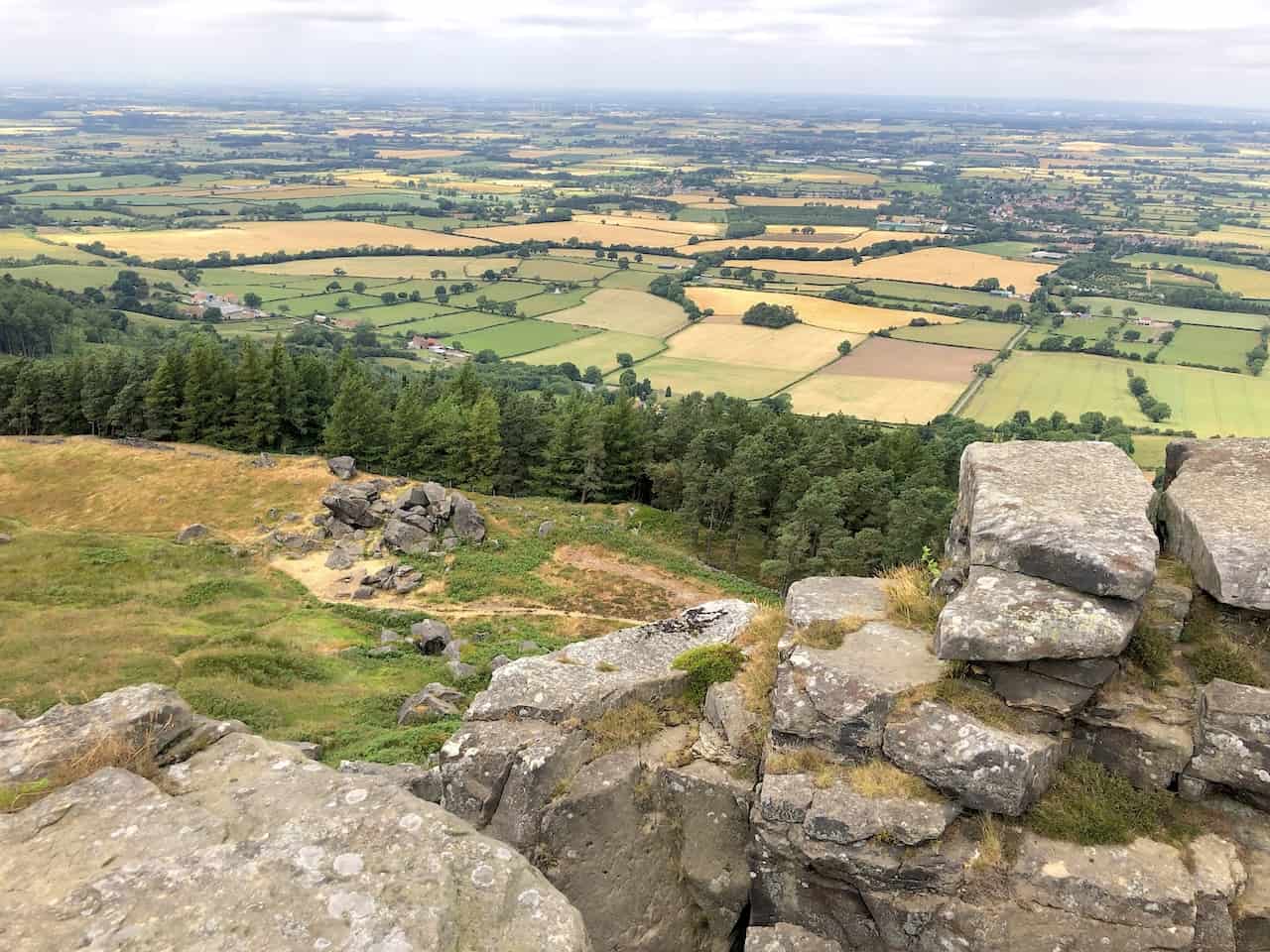
Exploring Walla Crag and Derwent Water with a Scenic Guide
A couple of days ago, I published an article on my website about a circular walk around Derwent Water. You can view it here:
https://www.paulbeal.com/derwent-water-circular-walk
The walk begins in Keswick and circumnavigates the lake in a clockwise direction. Despite being a low-level walk, it boasts some amazing views. However, if you’re in the mood for a walk of a similar length that starts from Keswick but offers a bit more elevation, you may find my guide to the Walla Crag walk more appealing:
https://www.paulbeal.com/walla-crag-walk
Walla Crag is a charming hill to climb, offering views from its summit across Derwent Water and beyond that are truly spectacular. At about 380 metres, its height is modest by Lake District standards. In comparison, giants like Scafell Pike, Scafell, Helvellyn, Skiddaw, and Great End all tower beyond 900 metres. Yet, Walla Crag proves that you don’t need to scale the tallest mountains to enjoy breathtaking views.
On the page, as usual, I’ve included walking directions, photos, statistics, information about which maps to use, and some insights into the fell itself.
The walk is perfect for beginners and seasoned hikers alike; the views are extraordinary, and it’s easily accessible from Keswick. This spares you the drive down some of the Lake District’s winding, narrow roads. Keswick is a delightful town to explore, whether at the start or end of your hike.
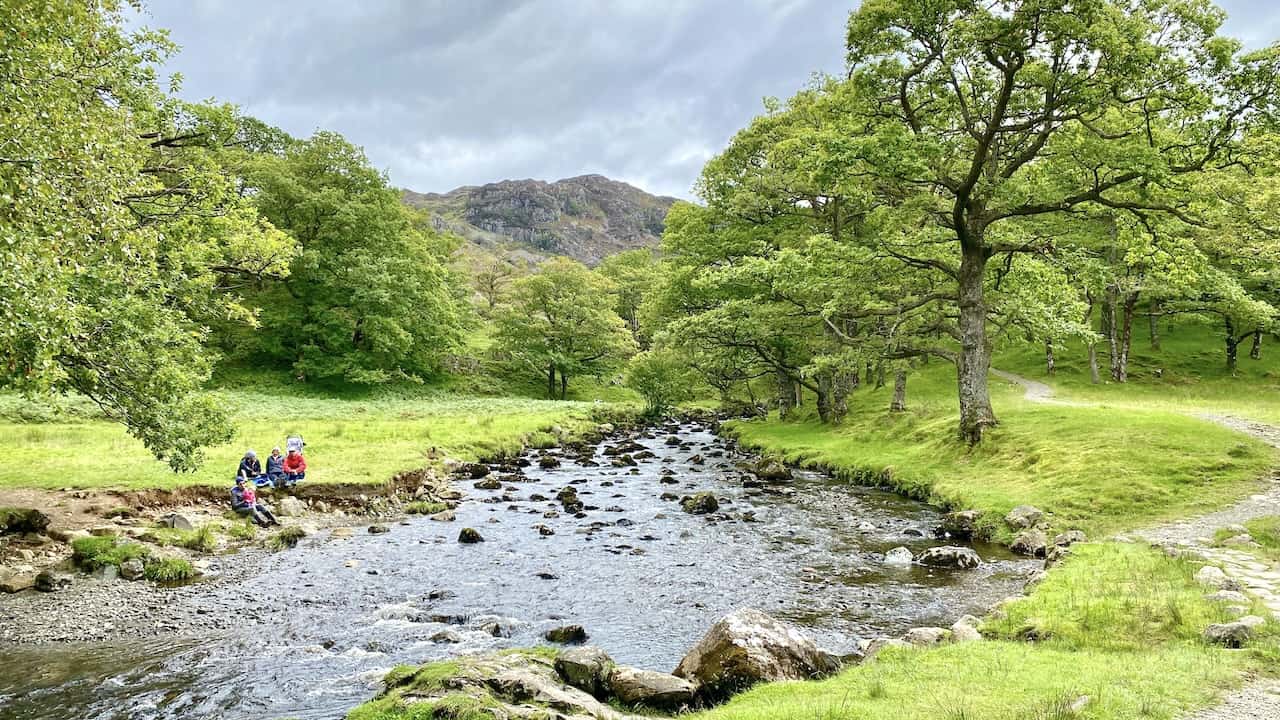
A Circular Adventure Around Derwent Water in the Lake District
Have you thought about walking around Derwent Water in the Lake District? If so, you might be interested in a new page I’ve just written on my website:
https://www.paulbeal.com/derwent-water-circular-walk
My Derwent Water circular walk, outlined in a clockwise direction, is a stunning adventure starting and ending in Keswick. This scenic route initially takes you along the eastern edge of Derwent Water. You’ll encounter remarkable landmarks such as Friar’s Crag, The Ings, and the Millennium Seat, where breathtaking views across Derwent Water towards the Borrowdale valley await. Don’t miss the Centenary Stone and the enchanting Scots Pines.
Depending on the lake’s water level, you might continue along the lakeshore to Ashness Gate Landing Stage or take a detour along a roadside footpath. You’ll circle around Barrow Bay, and then consider a detour to Lodore Falls if you’re keen on exploring further. After crossing the picturesque Chinese Bridge, you’ll join the Cumbria Way.
Prepare for an awe-inspiring ascent to higher ground near Manesty and below Cat Bells, where unforgettable views of the landscape await. The final stretch of your walk winds through the village of Portinscale, crosses the River Derwent, and brings you back to Keswick. Covering around 10 miles, this walk offers you an experience to remember.
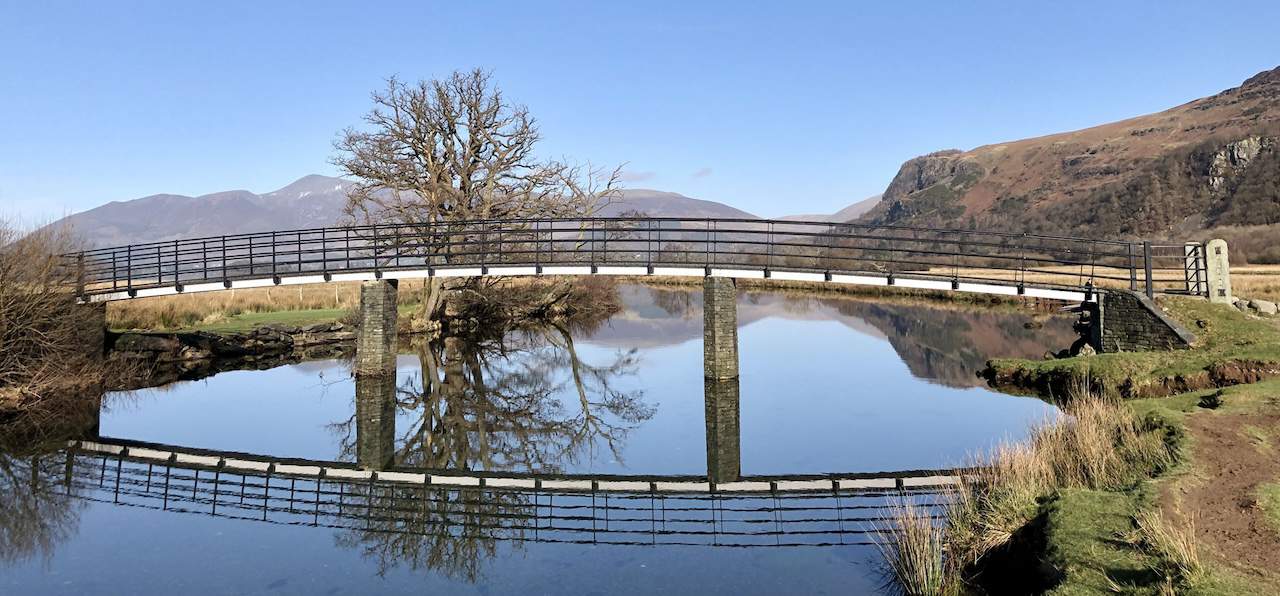
A Fresh Look at the Classic Route of the Danby Beacon Walk
Hi all, I’ve recently updated my guide to the Danby Beacon walk, and it’s now live on my website. The journey begins in Lealholm, a charming little village with ample free parking in the village centre.
Highlights include a stop at Danby Beacon, the Danby Lodge National Park Centre, and a distant glimpse of Danby Castle. Unfortunately, Danby Castle is private property, so it can only be admired from afar. The trek, one of my most favoured circular walks in Yorkshire, spans approximately 11 ¼ miles. As always, I’ve included maps and tools you’ll need for the walk, along with information on distance, duration, elevation statistics, and a selection of photos.
For more information on the walk, visit my website:
https://www.paulbeal.com/danby-beacon-walk
The history of Danby Beacon stretches back to the 1600s, during a time when England faced the threat of invasion from France. A soldier and his wife were stationed to watch for the anticipated French fleet. Upon sighting, they were tasked with lighting the beacon, signalling the first inland warning of invasion.
For those interested in exploring more about the story of Danby Beacon, I’ve written an in-depth article titled “Danby Beacon: A Symbol of Resilience in the North York Moors,” which you can view here:
https://www.paulbeal.com/danby-beacon
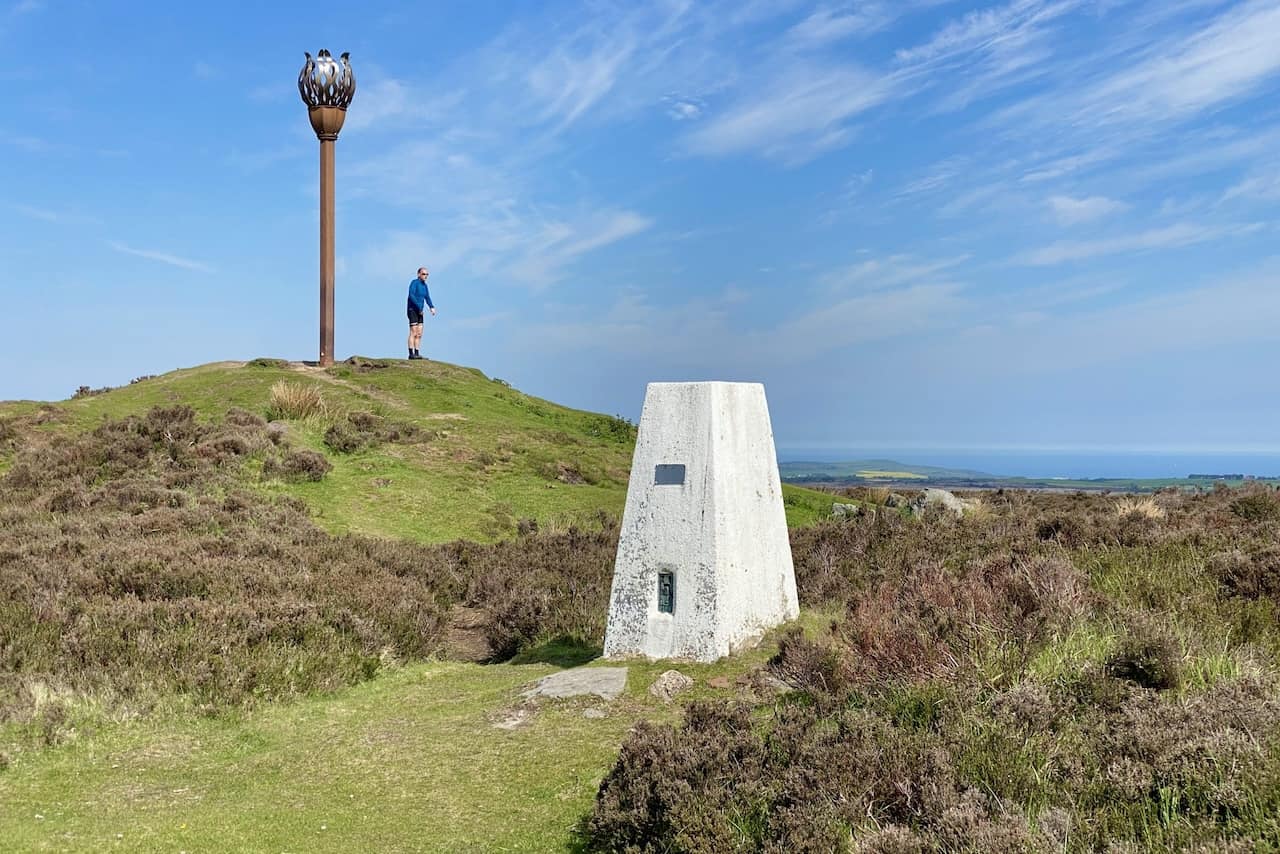
Unraveling the Mystery Behind Witch’s Broom in Trees
For years, whenever I noticed those clumpy bits nestled among the branches of trees, I assumed they were birds’ nests. But after some research using a popular search engine that begins with ‘G’, I discovered it’s actually Witch’s Broom.
Witch’s Broom is a peculiar and fascinating phenomenon where a dense cluster of twigs and branches sprout from a single point, resembling a broom. This growth anomaly can be sparked by various factors, including infections from fungi, viruses, or bacteria. In some cases, insects or mites are the culprits, or it could simply be the result of physical damage to the tree.
Though it may not always be harmful, this Witch’s Broom can stunt the tree’s overall growth and weaken its structure.
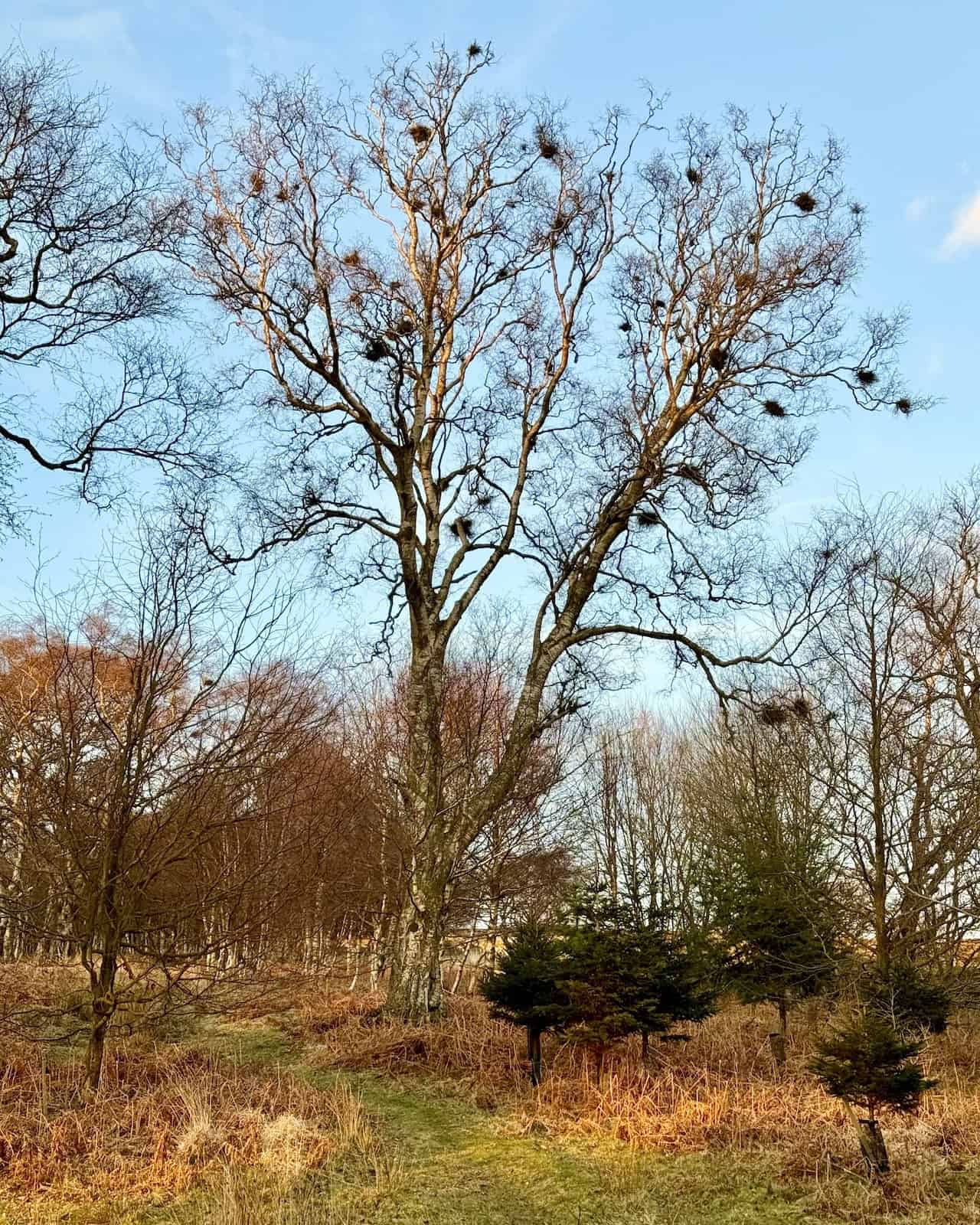
Leisurely Strolls Through the Yorkshire Dales from Grassington
Yesterday, my friends and I met in Grassington for a walk in the Yorkshire Dales. Our first stop was Linton Falls, an impressive set of waterfalls on the River Wharfe. Highly popular and a must-visit if you’re in the Grassington area.
After that, we headed east, alongside the river, for a very pleasant stroll. The path was easy to follow, leading us all the way to Hebden Suspension Bridge, just south of Hebden village. At the bridge, we had planned to stop for a break, coffees, and snacks, but one of our group suggested a visit to the café called The Old School Tea Room in Hebden. Following his advice, we found ourselves in a very nice, relaxing spot where we could’ve stayed all day.
Forcing ourselves to leave the café, we continued north along a track, aiming to reach Grassington Moor to see the extensive areas of disused lead mines. While the most popular route is a well-trodden track following Hebden Beck, we chose a detour, climbing up to Edge Top on the eastern side of the main track above the valley. This detour proved to be an absolutely delightful choice, offering great views of the typical, lovely Yorkshire Dales countryside, especially as we passed Mossy Moor Reservoir where we stopped for lunch. It was quite a relaxed affair; none of us was in a hurry, just enjoying the day and the weather.
We made our way up to Cupola Corner and spent some time exploring the area, a fascinating place likely buzzing with activity centuries ago due to extensive lead mining, dating back to the 17th century or possibly even earlier, though I’m not entirely sure about the dates.
Doubling back, we took a route along Old Moor Lane past Yarnbury, then all the way back to Grassington via a quiet, minor road. We concluded our adventure with refreshments at The Devonshire Grassington, a traditional, family-run pub and hotel. It was a very comfortable and relaxed ending to a great day.
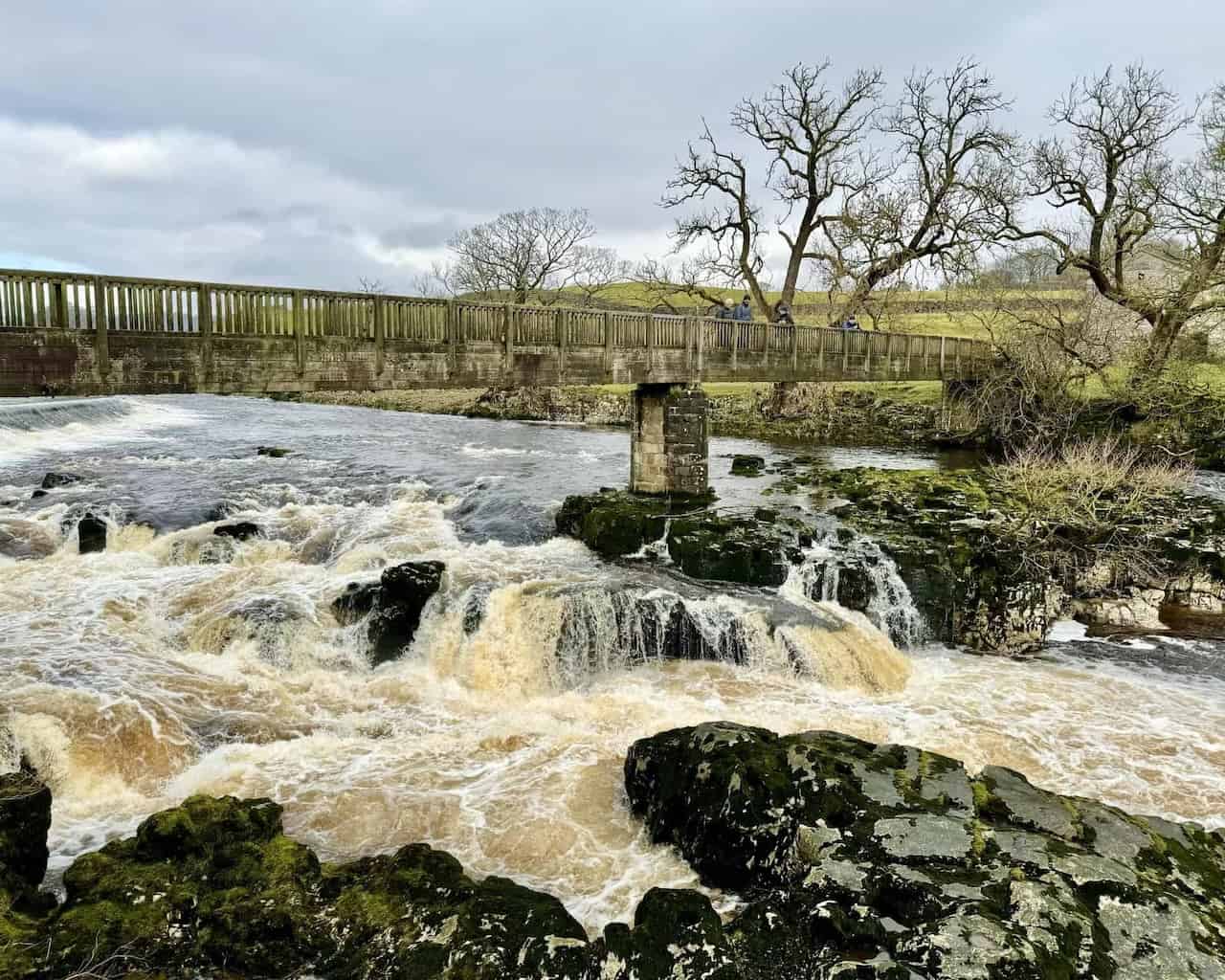
A Tranquil Walk Between Commondale and Castleton in the North York Moors
One of my most cherished circular walks in Yorkshire takes me along a track between Commondale and Castleton in the North York Moors. I often pause here to take in the view of the picturesque rural landscape.
Sheep graze on grassy fields near the old, roofless stone barn that stands forgotten. A railway, lined with trees, winds its way through the Commondale Beck valley below.
To the right of the valley, a patchwork of farmers’ fields stretches out in various shades of green; to the left, the heather-covered moorland. In the distance, the layered hills of the North York Moors National Park rise gently against the sky.
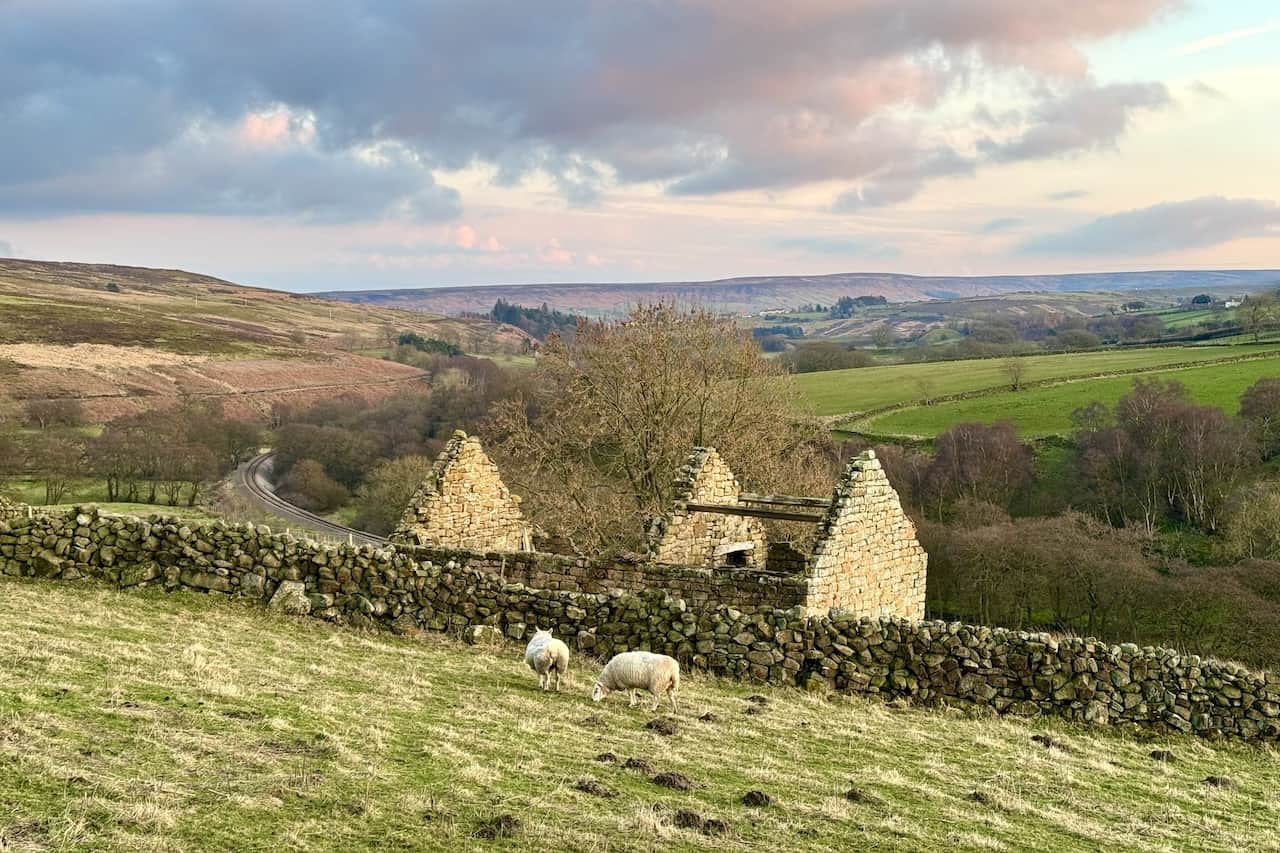
Discovering a North Yorkshire Gem with a Segment of the Esk Valley Walk
The Esk Valley Walk is a long-distance path in North Yorkshire. It starts with a circular loop in the North York Moors, just south of Castleton, then trails the River Esk to its estuary in the North Sea at Whitby. The path stretches about 37 miles.
I’ve just added a new walk to my website, a favourite of mine. It covers much of the initial loop section of the Esk Valley Walk, beginning from Castleton and spanning roughly 12½ miles. Despite its recognised long-distance path (LDP) status, be aware that some sections may become somewhat boggy during winter.
Feel free to head over to the website to have a look.
https://www.paulbeal.com/esk-valley-walk
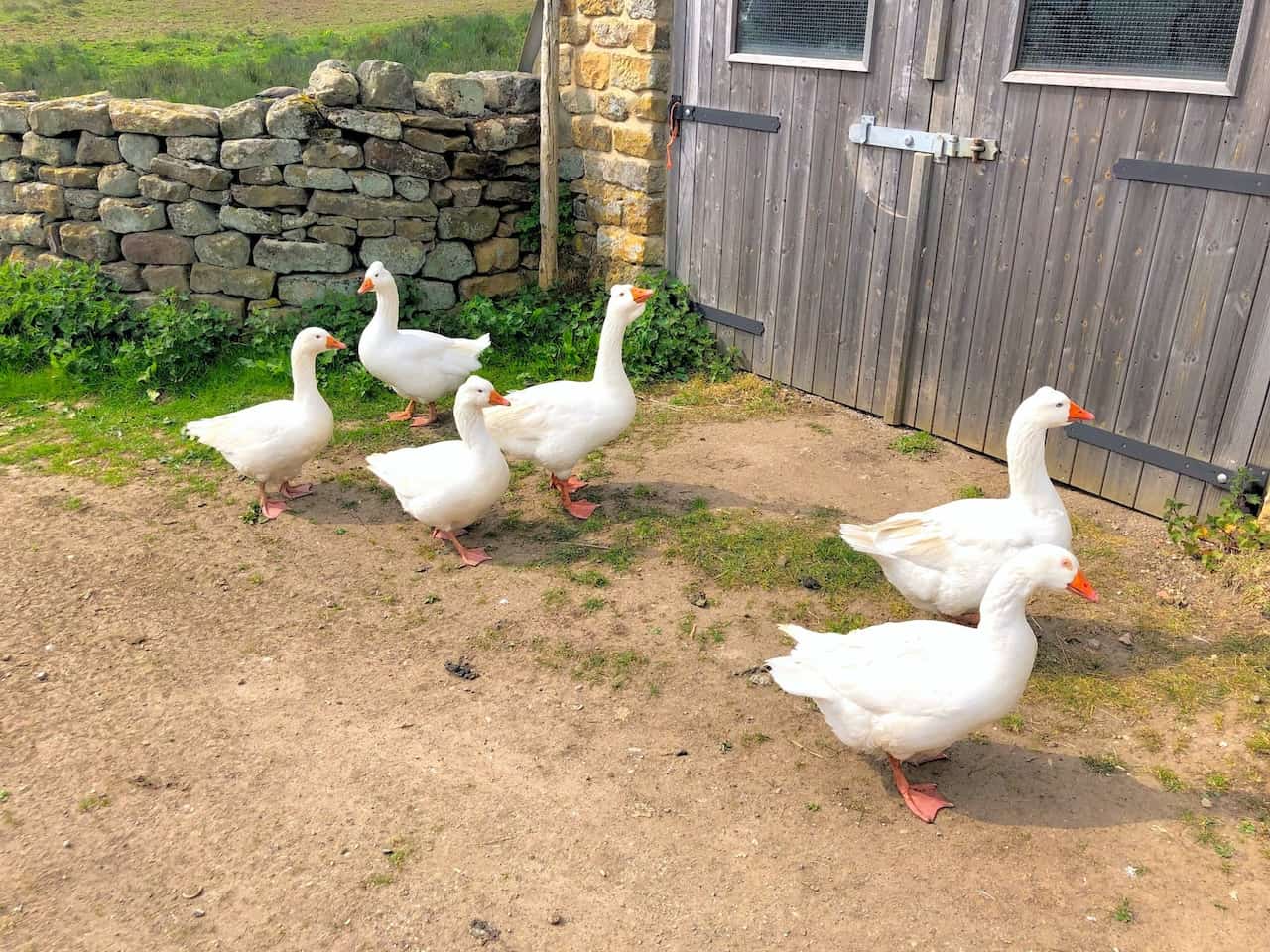
Amazon’s Top Walking Boots: Four Standout Choices for Men and Women
For walking and hiking, the right boots are essential for both comfort and safety. While Amazon boasts a wide range, certain boots emerge as top-sellers. From those, here are four I personally favour. As an Amazon affiliate, I may earn a small commission from any purchases made through the links provided. This helps support the upkeep of this website. Rest assured, you won’t pay a penny extra, but your purchase will contribute to keeping my site running smoothly. Happy walking!

Berghaus Men’s Hillmaster II Gore-Tex Walking Boots
These fully waterproof leather walking boots feature a Gore-Tex lining, ensuring no water enters whilst allowing feet to breathe and stay cool. Made from full-grain leather, they promise unmatched durability and comfort. The boots come with memory foam tongues and cuffs that mould to your feet for a tailored fit, and the Vibram Hillmaster outsoles offer confidence on challenging terrains.

Salewa Men’s Mountain Trainer Mid Gore-Tex Walking Boots
Made from durable suede and abrasion-resistant textile, these men’s hiking boots are both lightweight and sturdy. The upper material is enhanced by a 360° full rubber sheath. Their dual-layer midsole with Bilight technology ensures ergonomic cushioning and grip, especially on extended hikes. The Vibram Wrapping Thread Combi outsoles allow a natural walking feel, and the Gore-Tex lining provides waterproofing, breathability, and optimal weather protection. Furthermore, the patented Salewa 3F system ensures flexibility, a secure heel grip, and a blister-free fit.

Berghaus Women’s Supalite II Gore-Tex Walking Boots
Specially designed for women, these hiking boots offer waterproofing and breathability, thanks to their Gore-Tex lining. Crafted from full-grain abrasion-resistant leather, they’re durable enough for the toughest hikes. The Supalite soles ensure stability and traction, and the EVA midsoles add comfort for extended walks.

Merrell Women’s Moab 3 Mid Gore-Tex Walking Boots
These hiking boots incorporate a Gore-Tex waterproof membrane, blending breathability with superior waterproof performance. The combination of pigskin leather and mesh on the uppers, along with the suede outer material, ensure durability and style. Enhancements include 100% recycled laces, webbing, and mesh lining. Additionally, bellows tongues, protective toe caps, and Vibram TC5+ rubber soles ensure protection and ease on any terrain.